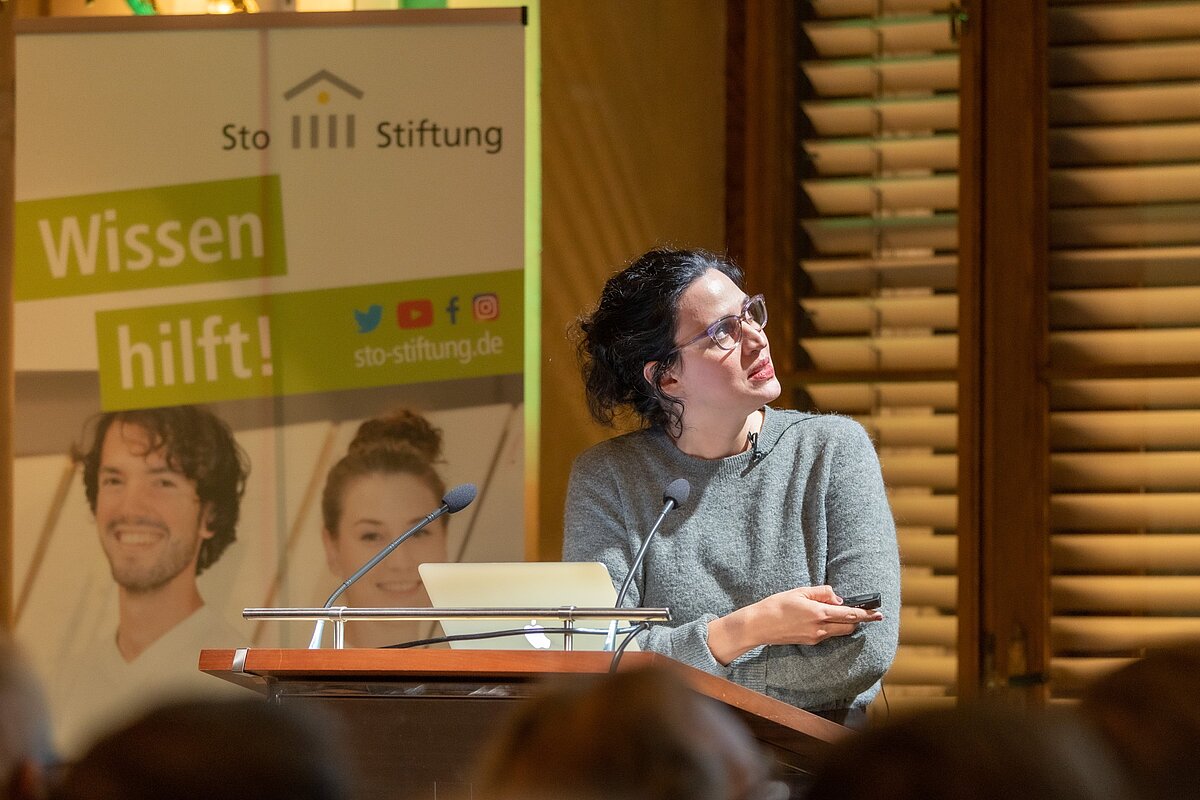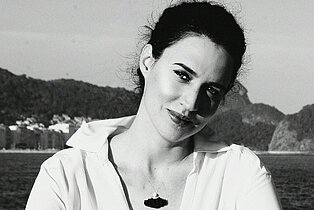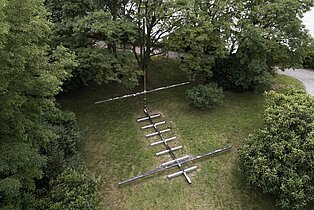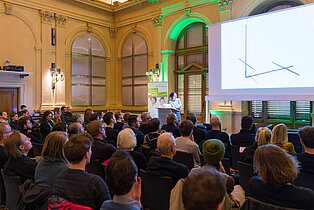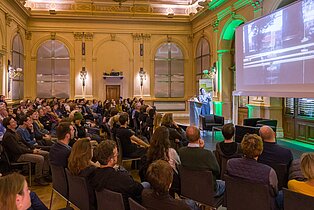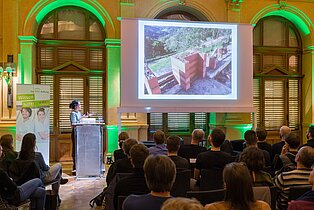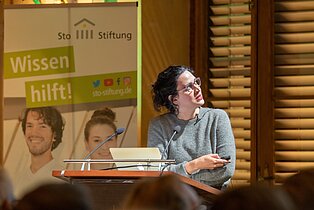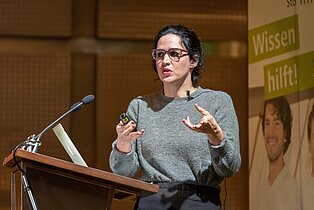Review | Carla Juaçaba in Graz
The presence of modesty
With a delicate string between architecture and art, on November 4, 2019, Brazilian architect Carla Juaçaba guaranteed the unusual start of the November Talks 2019 in the Old Technique Hall in Graz. Her works, which often do not want to decide whether they are still installations or are already buildings, impressively show how strongly present true modesty can be.
Restraint and fragility, as well as presence, are probably the best description of the Carla Juaçaba's presentation. The well-filled hall of the Old Technique in Graz started to listen more closely as she started to speak with her gentle voice. The modestly small scripture on the projection screen invites to look closely. Interestingly, this reaction also characterizes the effect of her works: they want to be humble, reserved, almost invisible. And that is what makes them powerful, space-filling and full of meaning.
In 2018, for the first time the Vatican was represented at the 16th Venice Architecture Biennial. Each of ten architects designed one chapel spread across the wooded island of San Giorgio Maggiore in Venice. Carla Juaçaba brings a chapel that is not at all a building, but an ensemble of two interconnected crosses. One is laid on the ground, transformed into a bench that invites to stay and perhaps pray, while the other one is vertical with the lowered cross beam as if bending down. Eight meters high and 12 cm thick stainless-steel beams form this piece. The beams are highly polished –so, they have neither their own color nor texture, but reflect its surroundings: trees, sky, leaves, ground. "Depending on the light, the shadow may be more visible than the chapel," describes Juaçaba, who is not Catholic and does not describe herself as particularly religious, the maximum restraint of her design. "The chapel is a symbol of life that is transient and anchored in nature." She opposes the attribution of the word "minimalist," but "abstract is good", she says, because it describes her approach perfectly. "Reduced" also fits very well, "reduced to the bones". The comparison with a skeleton is almost inevitable: our skeleton is lightweight, it seems fragile, but carries our body, provides it with stability and is the basis for our physical existence. It is also the part of the body that survives death the longest.
The next presented project, "Isostasis", may completely be considered as art. The LIGA showroom in Mexico City shows the significance of modern Latin American architecture in the form of installations. Architecture is a physical act of strength, says the Carla Juaçaba's design. An object consisting of strong magnets, guitar strings, bronze struts and green glass marbles allows the weights to magically levitate. It looks like they are hanging from the bottom up, like balloons pushed upwards by the buoyancy. “Ballast“ goes in a similar way: this object was actually meant to become a 32-meter levitating bench for the 2018 Biennial, supported by cube-shaped concrete formations that pre-millennials would instantly identify as "3D Tetris". The bench was not completed for static (and financial) reasons, but the prototypes of the concrete cubes are still standing and have been conquered by people using them as seats. Juaçaba does not hesitate to present this "failure" as a work of art - the point is that something remains even if its form changes.
The temporarily that remains is also the focus of the Humanidade Pavilion, built in Rio de Janeiro in 2012 for “Rio +20“, the United Nations Conference on Sustainable Development. The 8,000 square meters were gradually filled with a gigantic scaffolding, five “walls” made of struts, 170 meters long and 20 meters high, supported by 7,000 base elements. The exhibition spaces float like cubes between the scaffolding struts - which have never disappeared. It became clear to the people watching this building that this "scaffolding" was not the scaffolding, but part of the building. In the works of Carla Juaçaba, the temporary becomes permanent: the exhibition space floats in the open air, exposed to wind and weather, and most of it is made from recycled materials.
Permanent buildings that have the character of temporary - this could also describe the residential and family homes that Carla Juaçaba presented next. The Santa Teresa Family House, like the others, is designed to be cost-effective and blend perfectly with the natural environment. With its densely wooded and uneven terrain on a hillside, this property near Rio de Janeiro was a real architectural challenge. The trees had to stay because it is a nature reserve. The inclined beams form a skeleton, the corridors of glass create two floors of living space full of natural light, glazed and open to the forest, closed to the entrance. The Rio Bonito House is a nature retreat for one person, consisting of a bedroom, a living room and a kitchen. Thick stone walls protect one side, while generous glass facades offer a clear view to the river next to the house. The building appears like an archaic stone hut, allowing privacy and openness, closeness and connection with nature blend into one another. The same principle was applied to the Varanda House: Carla Juaçaba builds on the outskirts of the city of Rio de Janeiro, where the nature meets the city, a residence whose presence is so restrained that almost disappears in the forest. The solid meets the open, the view of nature remains unblurred, the building can be opened even when it is raining. The construction was completed in only 15 days - this is what we call a reduction to the essentials.
Carla Juaçaba was born in 1976 in Rio de Janeiro. She studied architecture and urban planning at the Universidade Santa Úrsula and continued her education at Pontifical Catholic University in Rio de Janeiro where she has been teaching ever since. In 2000, she founded her own studio. Her works are both private and public, with housing and cultural projects playing the main role. Together with architect Gisela Magalhães, she has completed a number of museum projects. She has lectured at the Harvard Graduate School of Design, the University of Toronto and the School of Architecture at Columbia University. In 2013, she was awarded the first ArcVision Prize, an international architectural prize for women.
Interview-Video
Carla Juaçaba spoke about her studio and her lecture at the November Talks in Stuttgart.


